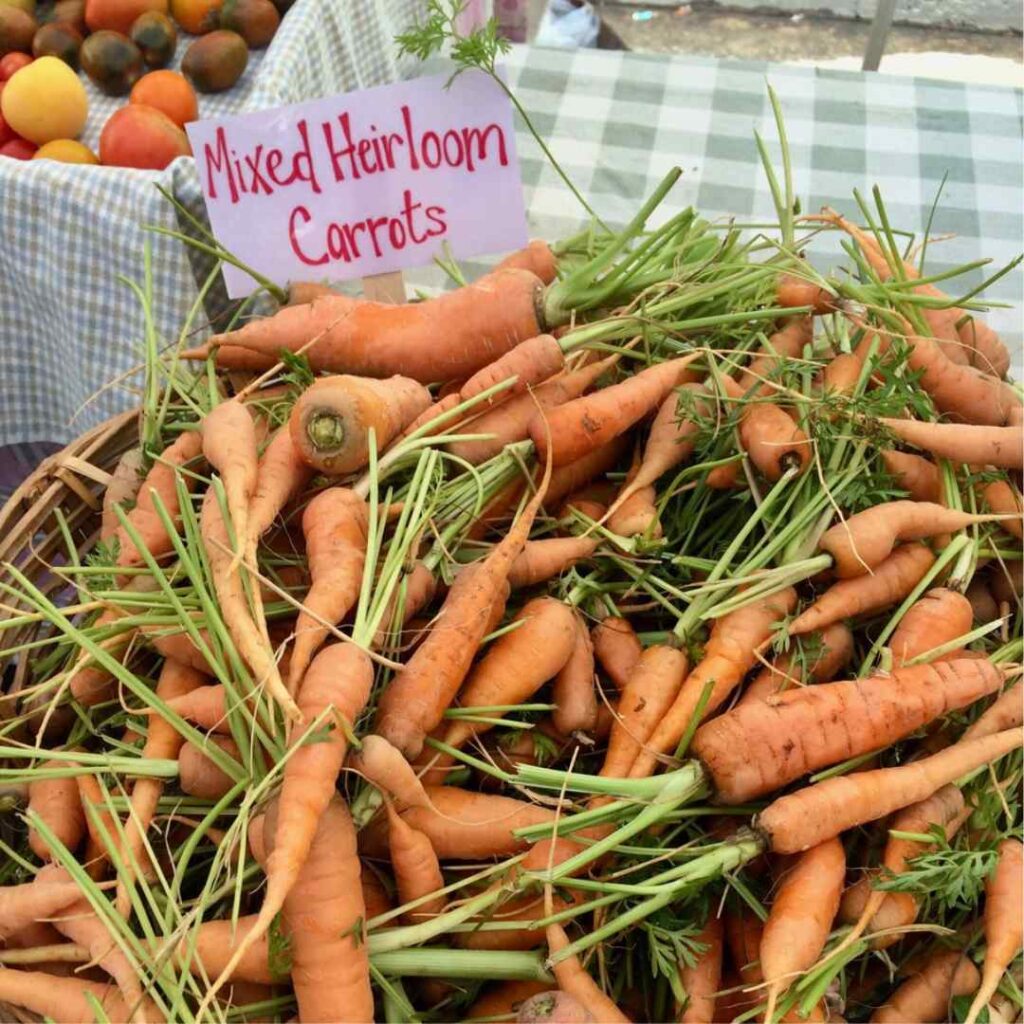How to Use Carrots

Learn everything you need to know about how to use carrots in the kitchen, from how to grow carrots to when to harvest carrots in the garden. I’ve got you covered with this expert guide.
Just snap into a brightly colored carrot—among the most versatile of the root vegetables—and revel in its natural sweetness. Rainbow carrots come in an array of colors beyond the standard orange root; you can find purple carrots, as well as yellow, white, and variegated carrots, thanks to a wide variety of carrots available for planting today. The color of carrots singles their nutritional value, too. But no matter what shade they come in, carrots are a healthy vegetable you should include in your diet more often. That’s why I’m sharing this guide to using carrots in the kitchen.

Carrot Nutrition
That pretty carrot is really an edible storage root, in which the plant stashes away valuable nutrients, making it a highly nutritious vegetable. One medium carrot (about 7 inches long, or 78 grams) has a lot to offer in exchange for a mere 30 calories: 200% DV of vitamin A, 250 mg potassium (5% DV), 6 mg vitamin C (7% DV), 8 mcg vitamin K (10% DV), 2 grams fiber (8% DV), and about 3% DV of many other nutrients, including folate and manganese. In the plant world, intense color often signifies the presence of health-promoting compounds, and carrots are no exception. Yellow and orange varieties are rich in the carotenoid compound beta-carotene, the precursor to Vitamin A, therefore linked to eye function and skin integrity. Red and purple carrots are packed with anthocyanin compounds, which have been studied for their antioxidant benefits for the cardiovascular system and other organs of the body. What about those carbs in carrots? Not to worry—the carb load is modest, and the fiber content helps slow down the digestion of glucose into your bloodstream, making it a great food for healthy weight and glucose levels.

How to Grow Carrots
One of the cool things about this veggie is that they are so easy to grow in your garden! They are one vegetable that pop up easily by seeds. About 2-3 weeks before the last spring frost date, get your garden ready. Just sprinkle seeds into your prepared garden bed about 1/2-inch deep about 1-2 inches apart, then cover lightly with soil. Soon, you’ll see feather carrot tops sprouting up from your garden. When to harvest carrots? They are usually ready to harvest about 60-80 weeks after planting the seeds, but I like to just push back the soil with my fingertip to spy the carrot tops to see their size. I prefer harvesting carrots when they are tender and young, about 5-inches long. Learn more about how to home garden in my free toolkit here.

How to Use Carrots in the Kitchen
There are so many ways to use carrots—after all, they are one of the most versatile veggies, appearing in a variety of food cuisines around the globe. How to store carrots? I like to store them in a canvas produce bag in the produce drawer of my refrigerator. How long do carrots last in the fridge? They’ll last for 1-3 months stored in a refrigerator as described.

1. Stretch Your Recipes with Carrots
Inexpensive and full of fiber, carrots can serve as a filler to stretch other ingredients in your recipes. Reducing your meat consumption? Shredded raw carrots can provide bulk and replace meat in “meatballs”, spaghetti sauce, or taco filling. Lucky enough to find snow white carrots at your local farmers’ market? Incorporate them into mashed potatoes in Mashed Potatoes and Heirloom Carrots to make those potatoes a tad lighter in carbs, and fill them out nicely.

2. Drink Your Carrots
I love carrot juice, but you can go beyond the juice. They belong in your whole food smoothies, too. Just toss in raw, chunked carrots into a variety of smoothies to boost nutrition and flavor. Either way works for my Mango Carrot Ginger Smoothie and Peach of a Zucchini Carrot Smoothie.

3. Think Beyond Carrot Cake
Sure, carrots are divine in sweet desserts, like classic carrot cake, but you can apply those carrot cake flavors (sweet spices, walnuts) to more than just dessert. Revive breakfast boredom with Carrot Cake Overnight Oats. But then again, Carrot Spice Cupcakes are timeless.

4. Go Raw with Carrots
While we love our cooked carrots, they are so good and crispy raw in a number of dishes. Try shredded, sliced, or julienne carrots in slaws, salads, appetizer platters, sandwiches, and grain bowls, for starters. Try pickled carrots for a crunchy fermented addition to your favorite dishes too.

5. Grill, Roast, and Sauté Carrots
There are so many cooking techniques you can apply to good, ole carrots. Sure, you can simply quick steam or sauté them to retain flavor and nutrition. But you can also try grilled carrots, roasted carrots, air fryer carrots, and stir-fried carrots in your favorite dishes.
Roasting is one of the best ways to prepare root vegetables like carrots. At 350 degrees and higher, raw carrots on a baking sheet transform into roasted carrots, an altogether different dish. Roasted carrots owe their unique color, aroma, and sweetness to the Maillard reaction, a naturally occurring chemical reaction that occurs between sugars and protein molecules at high heat. I make a big batch so that I can add more vegetables to a variety of dishes, even as taco or pizza toppings.

Give roasted carrots a try in my Meal Prep: Mediterranean White Bean and Sorghum Salad. This is a colorful and convenient make-ahead lunch for busy workdays. Follow along with my latest recipe video to learn step-by-step how to make 4 hearty meals from this one recipe.
Get to know more about how to use these plant foods:
How to Cook Sorghum
How to Use Baby Bok Choy
How to Use Cinnamon and Cinnamon Sticks
How to Cook Kohlrabi
How to Use Cherimoya


